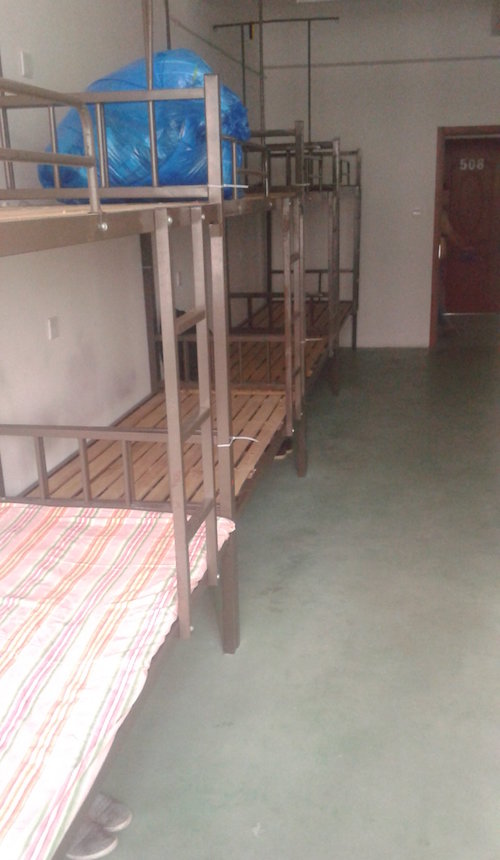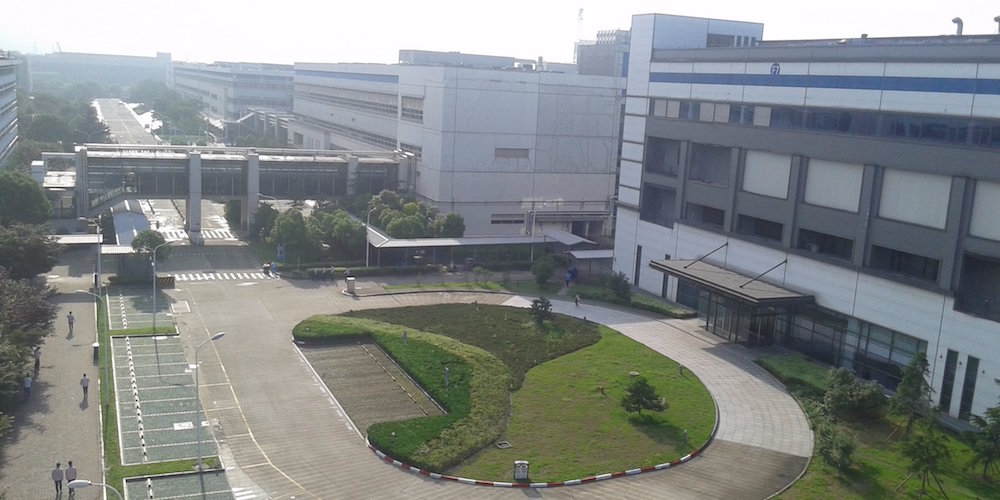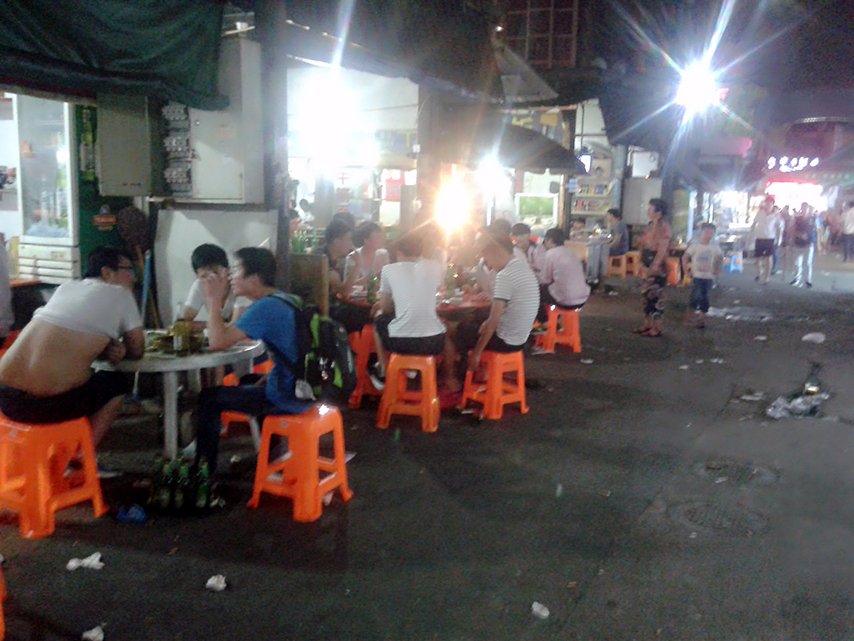Student Reveals What It’s Like to Manufacture iPhones in China
Image via QZ
Toggle Dark Mode
Have you ever wondered exactly how much time, energy, and hands-on labor goes into manufacturing the crown jewel of Apple’s empire? Well unfortunately, Apple will likely never reveal the “fact of the matter” when it comes to building its iconic devices piece-by-piece, and screw-by-screw. And even though Apple has been called out in the past over unsafe and questionable working conditions at the factories owned and operated by its Far East supply chain partners, the sad truth is — in the midst of captivation — most of us never stop to think about what actually goes into building an iPhone from the ground up.
Fortunately, we now have somewhat of an idea to reflect on, thanks in part to one NYU student who elected to spend six whole weeks on the front-lines — err, assembly lines — working at a Pegatron-owned iPhone mega-factory near Shanghai, China last summer.
Dejian Zeng, speaking exclusively in a lengthy interview with Business Insider, revealed the raw truth about a day in the life of an iPhone assembly line worker. While 12-hour workdays, sub-habitable housing environments, and sad restroom accommodations are enough to dissuade most of us from joyfully opting into the job of a hands-on iPhone-maker, it’s important to note that despite these seasonal positions being held each year by hundreds of thousands of skilled workers in China, and other emerging economies around the world, Zeng partook of the opportunity almost entirely of his own volition — albeit to fulfill a graduate-level requirement for his degree at New York University.
Pay and Housing

Zeng shared with Business Insider’s Kif Leswing, that he was compensated a rough total of 3,100 yuan ($450), and given standard dormitory-style housing for one month of work, which includes over-time pay. The publication notes that Apple representatives confirmed how Pegatron is now in 99% compliance with Chinese labor laws, however, meaning that while the breadth of assembly line employees work no more than 60-hours per week, employees who manufacture Apple products exclusively, work for 43-hours per week, on average, not including overtime. Based on a 43-hour work week, give or take, at $450 pay per month, that would mean Zeng and some of his fellow assembly workers took home about $2 and change per hour. They also received free housing in the dormitory-style complexes located off-campus.
“I wake up in a dorm shared by eight people. The dorm is not on the factory campus — it’s in a place about 10 minutes drive, and they have a shuttle bus for us,” Zeng said, in response to Leswing’s inquiry about how he starts a typical workday.
In regards to the overtime pay, however, Zeng noted that “The overtime thing, from my experience, it’s involuntary. You can’t leave easily. And then every time you ask, ‘Can I leave?’ they would just say, ‘You have to work on the assembly line’ — and so, you know, every station needs to have somebody doing it. And if you leave, who is going to do it?”
A Typical Workday
Zeng noted that a typical workday at the ChangShuo factory where he worked would begin around 7:30 pm in the evening, and would run through until 7:30 am the following morning. He reports being given a 10-minute break after each two-hour stint on the assembly line, and a 50-minute break for lunch after three, two-hour intervals on the assembly line.

As for his job, itself, Zeng reports that he began his work at the factory stationed on the final assembling testing packing (FATP) production line, where he and a large consortium of his co-workers were responsible for putting the iPhone together before it’s packaged and sealed.
“One line might have about 100 stations. Each station does one specific thing. At the beginning, I worked on iPhone 6s. And then after August, we are working on iPhone 7,” Zeng said, while adding “What I did is I put the speaker on the case, and I put a screw on it. The [iPhone] housing — we call it the back case — is moving on the assembly line, and that’s when we pick it up, and now we get one screw from the screw feeder, and then we put it on the iPhone and then put it back, and it goes to next station.”
“It’s like, that’s the work. I mean, it’s simple, but that’s the work that you do. Over, over, over again. For whole days.”
When questioned if he and his co-workers actually liked their jobs, though, Zeng indicated that while he wouldn’t say he liked it very much, he also wouldn’t say that he hated it.
“We just consider it a job that can give us money. Nobody enjoys the process, because the purpose of getting to work is waiting to get out.”
The Hardships
Zeng also talks extensively about the tiring nature of the job he performed. While it wasn’t particularly demanding, in itself, he reported having to focus his attention immovably on the task at hand — and that he would often try to eat meals at the on-campus cafeteria, which he was given 50-minutes per shift to do, in less time than he was allotted so that he could eek out some much-needed sleep from the remaining few minutes of his break.

“If you have finished the meal earlier [than 50 minutes], you can take some sleep also. Sleep is really a thing in the factory. You can see that in the lounge — we have a lot of long sofas, but it’s not really a very comfortable sofa,” Zeng said, while adding that “People just sit there and sleep. But you can’t lay down. There are people walking around. If they see you lay down, they will swipe the ID and take a record of it. And they put the record in your profile. And then they will publish it to your whole assembly line, so your manager would come and yell at you later. Sometimes if it happens multiple times, they deduct money.”
After a long day of work, by the time 7:30 am rolls around, Zeng said that he would usually go and eat another meal at the cafeteria, and then he would then take the bus back to his dorm where hot water was seldom if ever available.
“If you’re lucky, there is hot water. Sometimes there’s no hot water or there’s no water at all,” Zeng said.
‘The Client’
Interestingly, Leswing inquired about the role of Apple at the manufacturing facility, and if the workers employed there knew that they were even manufacturing Apple products — to which he replied that they do.
“They know. We all know that we are assembling Apple products. We even know ‘this is the iPhone 6’ or ‘this is the iPhone 7 that’s coming out.’ Everybody knows,” Zeng said, adding that supervisors and assembly line managers would often refer to Apple as “The Client.”
“They tell you. They say, ‘The client is here.’ Sometimes Apple staff comes to do an audit or something like that. They walk around the assembly line. They were always very serious about it, and we would be told ‘The Client is here.’”
When asked by Leswing who his boss was, Zeng responded that when working on the assembly line, the power structure — who issues the commands — is pretty clear.
“The person you receive direction from the most is your group leader. They give you demands. They are the ones who hold meetings after work to summarize today’s performance. They are the ones who keep pushing you, saying, ‘We have 500 pieces left, keep working!’”
Importance of Safety
Zheng also said that safety and security appeared to be the top-most priorities at the facility, with upper-level supervisors providing extensive training sessions, on a weekly basis, to each individual station of workers — who, in totality, amounted to about 100,000 individuals during peak manufacturing season.
“Those trainings are more about Apple’s standards. They said, ‘Here are a few things that our client cares about,’ including involuntary overtime and child workers. They listed the four or five core violations that Apple cares about,” Zheng said, while adding that “There’s all kinds of different trainings, even about building personal relationships and how to manage your money — all kinds of things.”
iPhone Assembly in the U.S.
In addition to a plethora of related questions, Zheng was later in the interview asked about his personal viewpoint, having worked on the assembly line, about Apple ever bringing iPhone manufacturing back to the U.S., as President Donald Trump has repeatedly called for.
“From the labor perspective, I don’t think it’s very realistic for bringing labor-intensive manufacturers into the U.S. Why I’m saying that — just think about wages. Chinese people are getting 2320 yuan, which is about $400 per month,” Zeng said, while also adding that “If it really happened, if factories actually moved to the U.S., I can’t see it creating a lot of jobs. I would see workers getting replaced by a lot of machines, because a lot of the work I see in the factory can actually be done by machine.”
It’s interesting to note that Zeng’s sentiments, though they come from a first-person perspective, appear to echo those held by a myriad of experts on economic matters, including those put forth by the MIT Technology Review last year.






